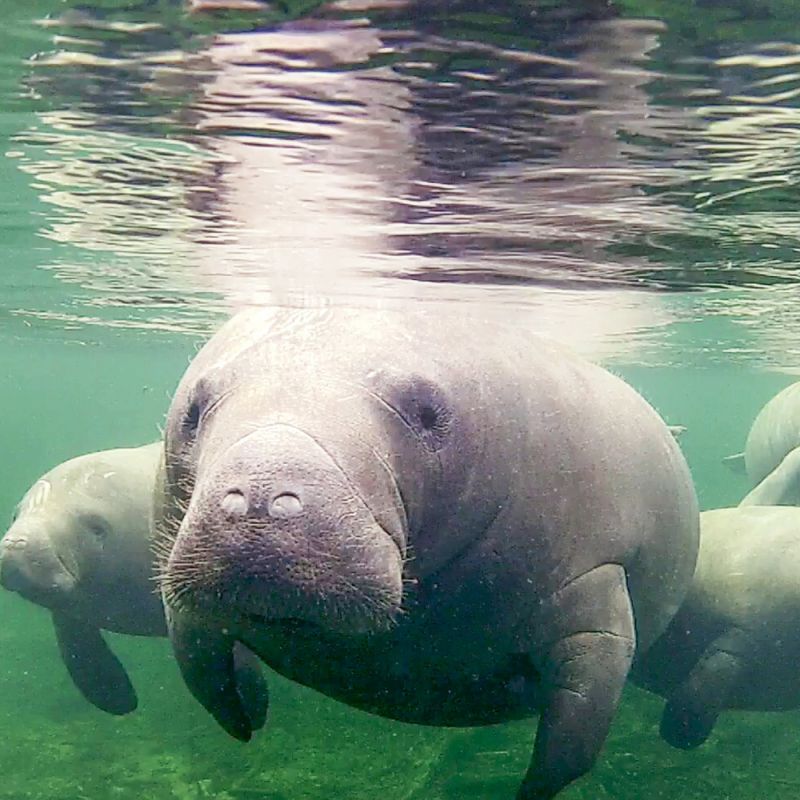
The days of sailors mistaking manatees for mermaids (the root of their Latin order name, Sirenia), are behind us, but spotting a sea cow is still a joyful experience for modern boaters. When Charleston’s water temps hit the high 60s in late May, West Indian manatees begin to arrive on their annual migration north from Florida, often making their way far up the Cooper River in search of spartina grass, lily pads, and other plants they devour with voracious appetites. In 2015 alone, 74 sightings across the state were reported to the SC Department of Natural Resources (DNR).
Though manatee populations have rebounded—enough so that in January, the US Fish and Wildlife Service proposed down-listing the species from “endangered” to “threatened”—it is critical that folks don’t let their excitement over a sighting lead to harmful behaviors. It’s actually illegal to give these gentle giants food or water, as well as to pursue or touch them.
“Feeding or watering (running a hose off a dock) trains manatees to be in the most dangerous places in their world—docks and marinas,” says DNR veterinarian Al Segars, noting that boat propellers can disfigure or kill the creatures. “The worst thing you can do for a wild animal is let it lose its fear of humans.”
Charlestonians, this is one time you’ll have to resist offering up that famed hospitality.
Protect the Manatees
Take these steps to help keep the visiting mammals safe
➼ Obey “No Wake” zones to avoid hitting the slow-moving marine animals.
➼ Wear polarized sunglasses when boating, as they make it easier to spot manatees, and look for swirls of water they leave behind as they submerge.
➼ Keep a safe distance as you watch the creatures, and don’t break the law by feeding, watering, pursuing, touching, or playing with them.
➼ Help the DNR with their tracking efforts by reporting any sightings at www.dnr.sc.gov/manatee/sight.
➼ If you accidentally injure a manatee or spot one that’s hurt, call (800) 922-5431.
Watch SeaWorld's video about the manatee they helped rescue from the Cooper River last December: